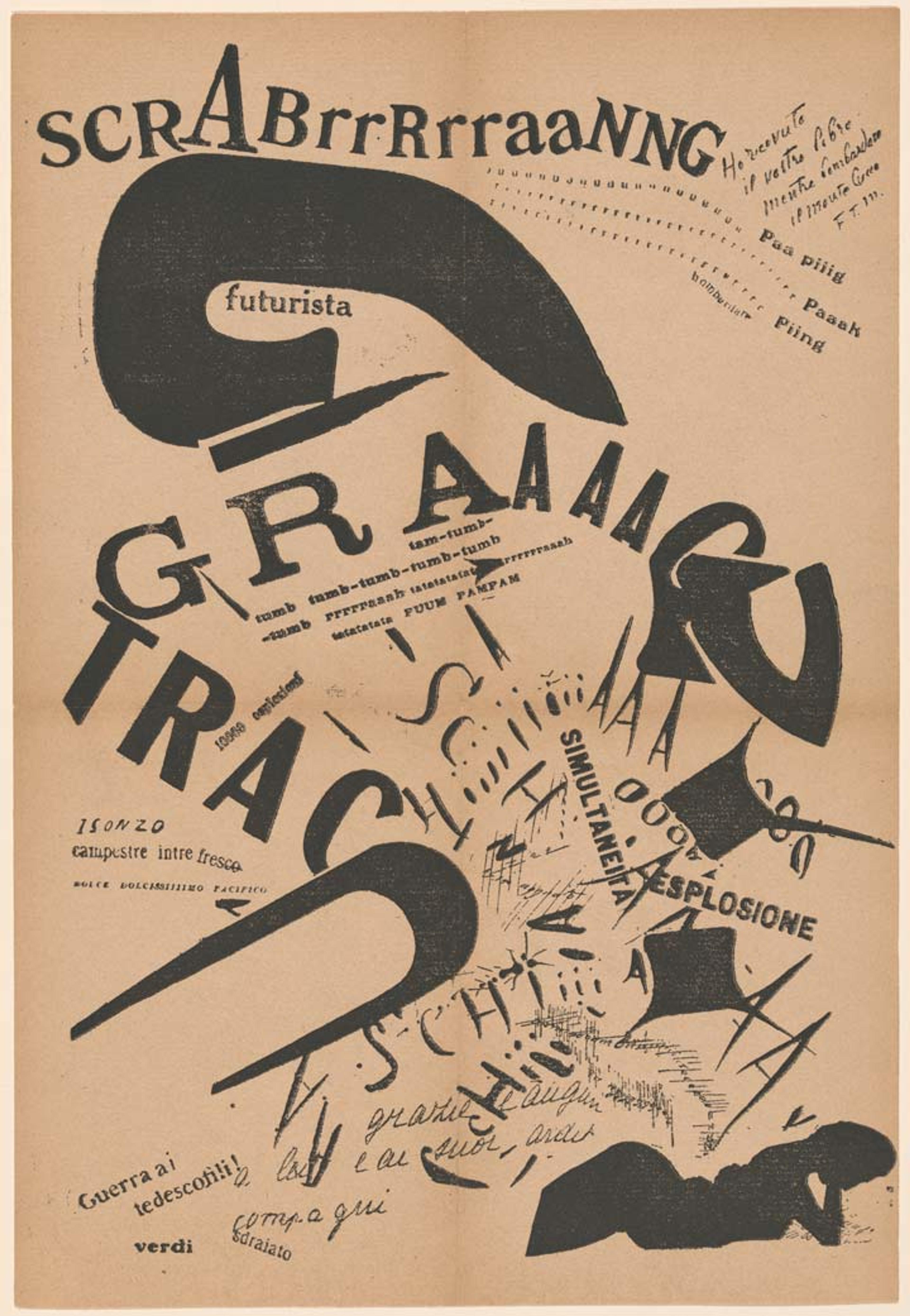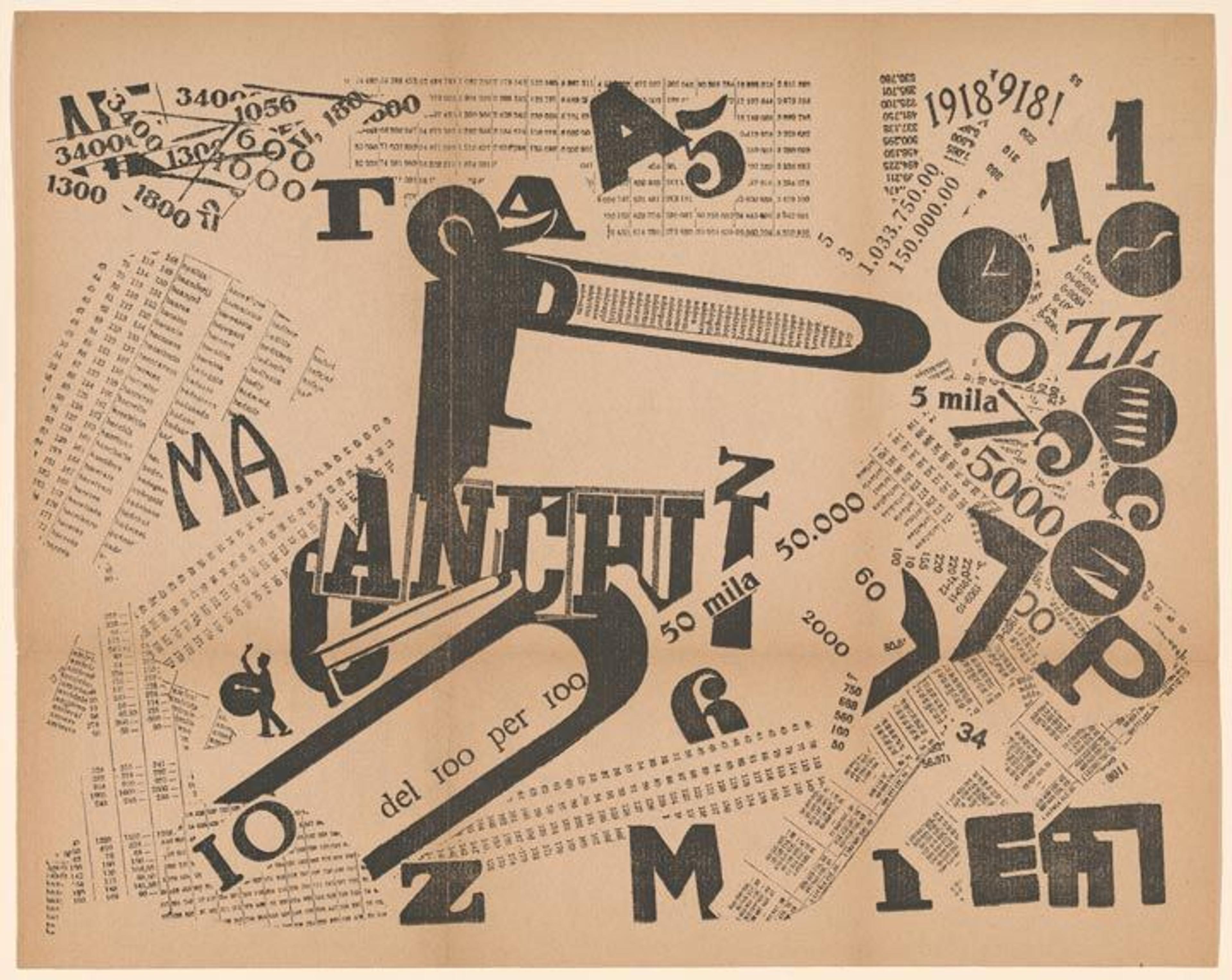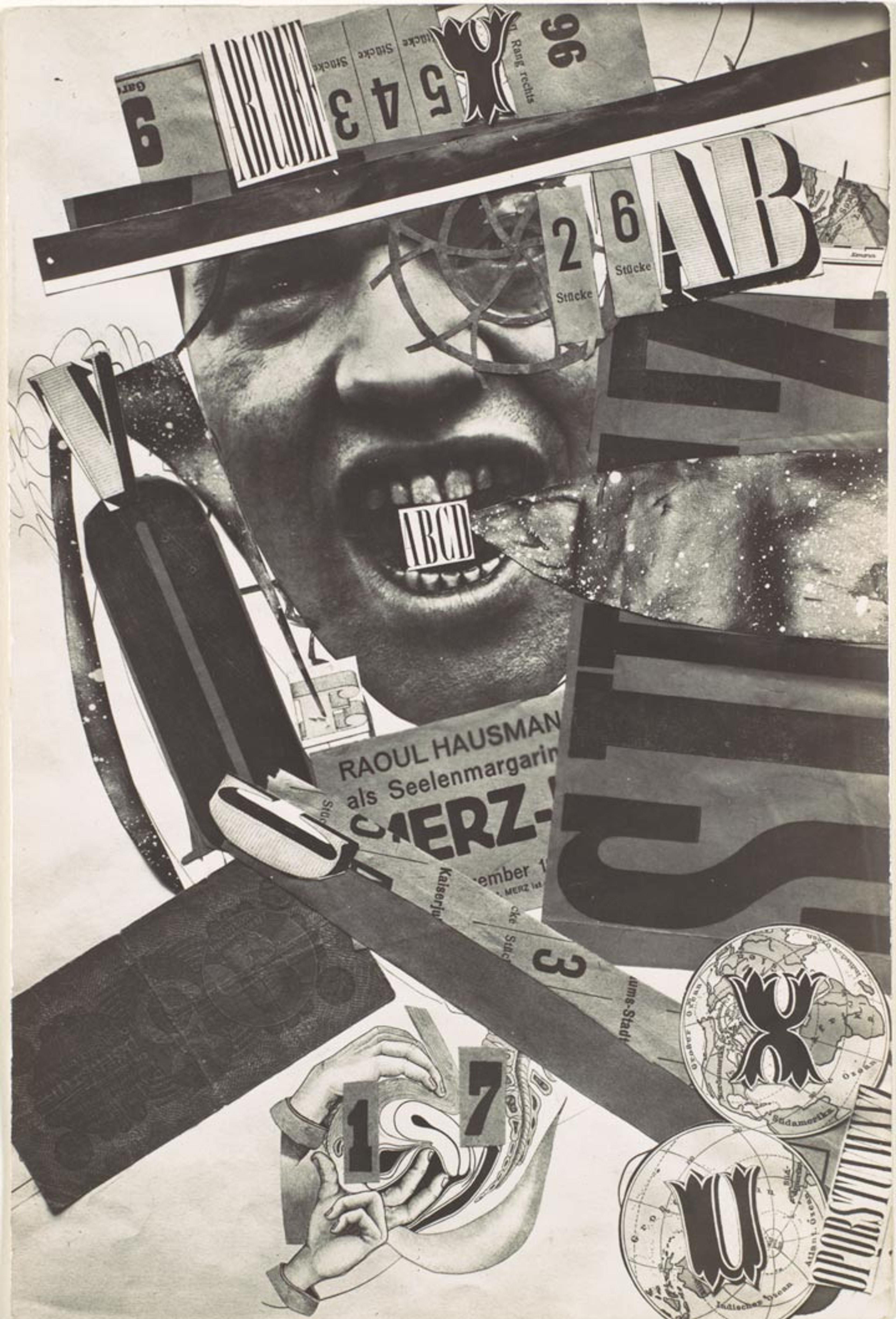A Revolution in Language

Roland Sabatier (French, born Toulouse 1942). Lettrie à ouvrir des horizons nouveaux (detail), 1966. Overall: 8 9/16 x 5 5/8 x 11/16 in. (21.7 x 14.3 x 1.8 cm). The Metropolitan Museum of Art, New York, John B. Turner Fund, 1967 (67.765.18). © Roland Sabatier
«A central component of the exhibition Wordplay: Matthias Buchinger's Drawings from the Collection of Ricky Jay, on view through April 11, is the examination of various forms of writing found in European and American graphic arts since the 17th century. Also included in the exhibition are 20th- and 21st-century artworks that show just some of the ways artists have engaged letterforms and language, broadly considered, and in the process, challenged dominant linguistic codes, as well as cultural, social, and political structures. We can examine this engagement through work made during three 20th century European avant-garde movements—Futurism, Dada, and Lettrism—all of which have had, and continue to have, a profound impact on artistic production.»
In February 1909, Filippo Tommaso Marinetti published The Founding and Manifesto of Futurism ("Le Futurisme") on the front page of the French journal Le Figaro. Marinetti lauded the accomplishments of a group of young Italian artists known as the Futurists, who were attempting to break with the classicism of the past and dismantle existing visual and verbal structures in order to reflect the sounds, images, and dynamism of modern life. That the manifesto was published in Paris—then viewed as the center of modernity and contemporary art—was not a coincidence; rather, it illustrated that Marinetti intended for his manifesto to serve as an announcement to the international community about the group and their philosophy, as well as a veritable call to arms.
In 1912, following the mandate of the manifesto, Marinetti developed parole in libertà, or free-word poetry, a radical form of writing in which words and sounds are reconfigured and conventional syntax and structure eschewed. In these collage-poems, which comprise dispersed text, fragmented words, onomatopoeias, and distorted letters, Marinetti and other Futurists created works that could be interpreted both visually and verbally.
Marinetti's In the Evening, Lying on her Bed, She Reread the Letter from her Artilleryman at the Front and A Tumultuous Assembly: Numerical Sensibility—both of which are from his book Les Mots en Liberté Futuristes—are examples of the next stage in the Futurists' engagement with language: tavole parolibere, or free-word pictures. In these works, innovative typography and diverse pictorial elements are scattered across the surface of the page to create a kind of visual and aural cacophony. In the Evening, Lying on her Bed, She Reread the Letter from her Artilleryman at the Front features the silhouette of woman reading a note from "her artilleryman" in the bottom right corner. The distorted and fragmented words, both real and constructed, thundering above her reflect the sounds of war, as well as the Futurists' fight against grammatical, artistic, and social conventions.

Filippo Tommaso Marinetti (Italian, born Egypt 1876–1944). In the Evening, Lying on Her Bed, She Reread the Letter from Her Artilleryman at the Front (Le Soir, Couchée dans son lit, elle relisait la lettre de son artilleur au front), published in Les Mots en liberté futuristes, created 1917, published 1919. Letterpress; 13 3/4 x 9 1/8 in. (34.9 x 23.2 cm). The Metropolitan Museum of Art, New York, Gift of W. Michael Sheehe, 1995 (1995.511.1)
In A Tumultuous Assembly: Numerical Sensibility, Marinetti again liberates numbers, signs, letters, and images from their functional responsibilities by exaggerating forms and juxtaposing diverse elements to create unexpected associations. He combined innovative typography, dramatic variations in scale, and found elements, such as the image of the drummer and the strips of letters and numbers, to create a dynamic composition that represents a crowd celebrating Italy's victory in World War I. Both of these works show how the Futurists visually represented war through the use of typography and orthography, and created analogies between weaponry, such as torpedoes and bombs, and their poetry.

Filippo Tommaso Marinetti (Italian, born Egypt 1876–1944). A Tumultuous Assembly. Numerical Sensibility (Une Assemblée tumultueuse. Sensibilité numérique), published in Les mots en liberté futuristes, 1919. Letterpress; 10 1/2 x 13 in. (26.7 x 33.0 cm). The Metropolitan Museum of Art, New York, Gift of W. Michael Sheehe, 1995 (1995.511.2)
The Futurists were not alone in their belief that the destruction of language could lead to political and social revolution. Born in the wake of World War I, Dada artists—who, unlike the Futurists, rejected militarism—also sought to create an art that would disrupt dominant systems of order, including conventional modes of perception. Raoul Hausmann, a founder and key member of the politically oriented Berlin Dada group, captured in his work the dynamic spirit of both creation and destruction inherent in "Dadasophy" by juxtaposing letters and fragments of text, images, and references with both visual and aural elements.
In Hausmann's ABCD, a self-portrait based on a 1923 collage, he combined photography with fragments of paper featuring words, phrases, and disparate images gathered from a variety of sources in order to reflect a contemporary lived urban existence. Combined with those to the left spelling "VOCE" (Italian for voice), the letters "ABCD" extending from Hausmann's mouth allude to the centrality of both phonetic poems and spoken word performances in his oeuvre and that of his Dada contemporaries.

Raoul Hausmann (Austrian, 1886–1971). ABCD, 1920s. Gelatin silver print; 5 15/16 x 4 in. (15.1 x 10.1 cm). The Metropolitan Museum of Art, New York, Ford Motor Company Collection, Gift of Ford Motor Company and John C. Waddell, 1987 (1987.1100.58). © 2016 Artists Rights Society (ARS), New York
Both Futurism and Dada influenced Lettrism, an avant-garde artistic and literary movement that emerged in postwar France. Letterists sought the liberation of language by destroying the ability of letters to convey meaning or act as representations of anything other than themselves. As shown in Roland Sabatier's art, the Letterists combined images, utterances, hieroglyphs, and musical notes with fragments of text, letters, and even complete words to create pieces that can be read (even sung), heard, and interpreted visually. He even included a micrographic image of a man's head that is a portrait composed almost entirely of minuscule marks and written forms.
In Sabatier's Lettrie à ouvrir des horizons nouveaux, forms are dispersed across the surface of the page, challenging the dominant manner in which pages are read and language is interpreted in Western European culture (from left to right and top to bottom) while also showcasing elements of play and humor. The term "lettrie" refers to a Letterist poem, which group members believed was a blank form that could "open new horizons" for both the author and the reader, as well as society at large. Like many Letterist works, the title Lettrie à ouvrir des horizons nouveaux evokes a variety of associations ranging from characters from the alphabet, writing, and literature to being well read, to decorative printed letters found in traditional texts, as well as making reference to, and promoting, the Letterists themselves.

Another page from Roland Sabatier's Lettrie à ouvrir des horizons nouveaux. © Roland Sabatier
These works show just some of the ways artists engaged language and letterforms in the 20th century, and through them, larger artistic, social, and political concerns. The exhibition Wordplay also features work by artists such as Jasper Johns, Louise Bourgeois, Suzanne McClelland, Christopher Wool, Glenn Ligon, and Tony Fitzpatrick, who continue to use letters as a central motif in their art, as well as artists Cy Twombly and Jacob El Hanani, whose art makes reference to the physical act of writing and mark making.
Jennifer Farrell
Jennifer Farrell is a curator in the Department of Drawings and Prints.